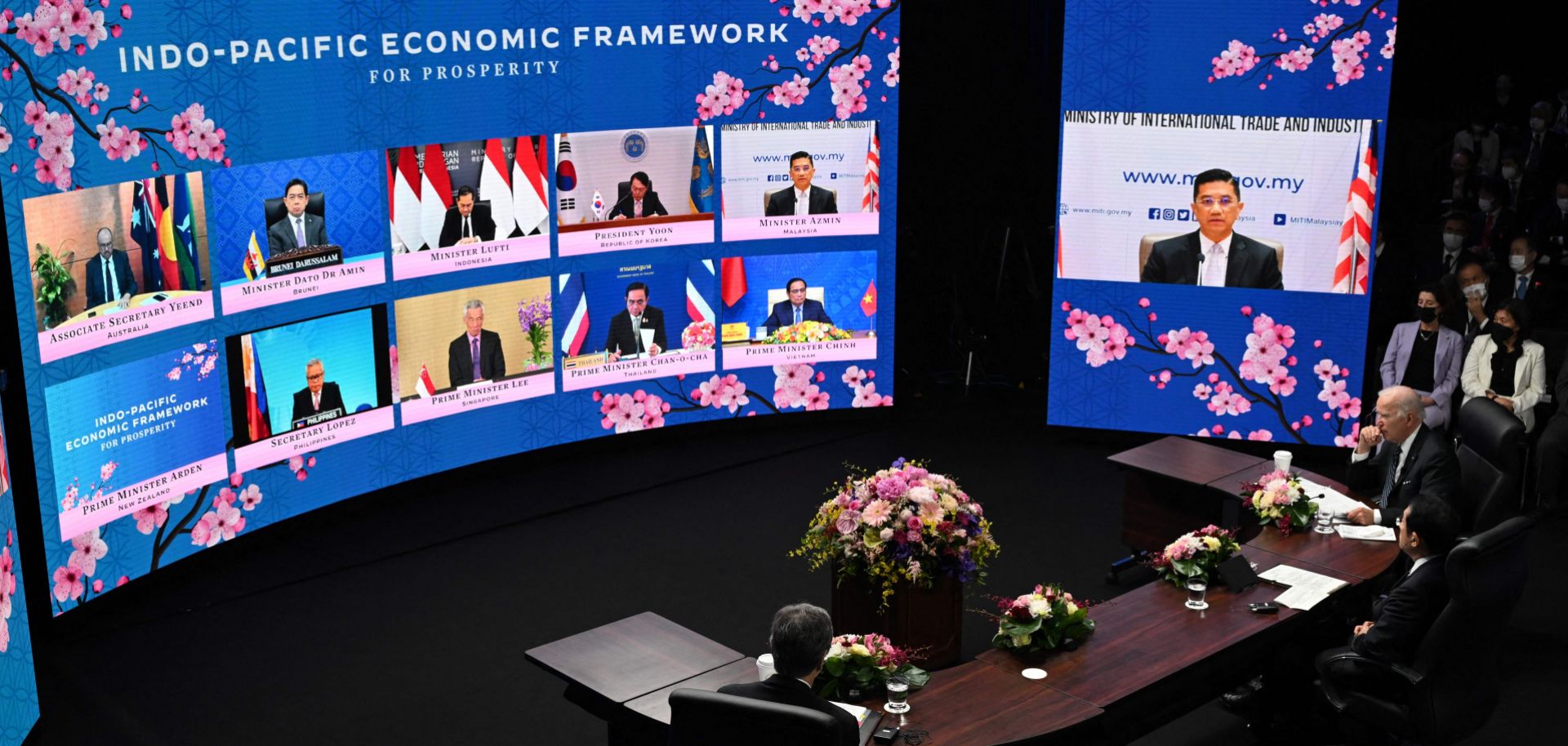The Indo-Pacific Economic Framework is a new vehicle for the United States to counter China economically in the Asia-Pacific region, but its narrow scope and disagreements between members will limit the effectiveness of the new initiative. During U.S. President Joe Biden’s five-day trip to Asia, the United States and 12 other countries announced on May 23 that they were “launching the process to establish” the Indo-Pacific Economic Framework for Prosperity. According to a joint statement, the IPEF -- which Biden first unveiled during the East Asia Summit in October -- will form the economic cornerstone of the United States’ strategy in the Asia-Pacific region after the former U.S. administration withdrew from the Trans-Pacific Partnership (TPP) in 2017, less than one year after the United States signed the free trade pact. In addition to the United States, the IPEF will include Australia, Brunei, India, Indonesia, Japan, Malaysia, New Zealand, Philippines, Singapore,...

